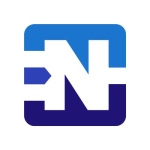What is our primary use case?
We are using Juniper SRX for general protection. We are not using those next-generation features, we are using them as layer 4 protection only.
On the enterprise side, we are currently only using traditional firewalling and do not have extreme-level features, such as IPS or UTM. This is because the team overseeing this area has been handed over to us in the last few years.
When we were doing the migration from the CRBV to ERV ports, at that particular time, we were working on the Juniper SRX.
What is most valuable?
The IPS functionality of Juniper SRX is useful in the telecom industry.
What needs improvement?
In comparison to other enterprise-level firewalls, such as Cisco FTD, Cisco has improved significantly. In the past, I believed that Juniper SRX was superior, but after seeing the advancements in the FTD platform, Cisco has better functionality. I have not recently explored Juniper SRX's next-generation firewall capabilities as we only use basic firewall filtering in our enterprise network.
Cisco had a more organized deployment process for their IPS feature. They would put the IPS in sensing mode in the network for a certain period of time and then the firewall would recommend certain policies to the administrator based on the network activity during that time. On the other hand, when I was working with Juniper SRX in 2013, we had to coordinate with the end user to gather information, such as source and destination IP addresses, and then build templates using Juniper SRX's provided templates. Additionally, Cisco had a more useful functionality when it came to security visibility and monitoring, while Juniper's STRM was very good in the past but now it's not for our use case. We are using other team's solutions to monitor our firewalls.
For how long have I used the solution?
I have been using Juniper SRX for approximately 10 years.
What do I think about the stability of the solution?
From a hardware stability point of view, Huawei is a much better solution.
The stability of Juniper SRX is good, but there have been instances where it did not perform well. However, when compared to another vendor, such as Huawei, it has been deployed in our backbone for many years without any issues. This does not mean that Huawei is better than Juniper, in terms of functionality, Juniper is superior.
What do I think about the scalability of the solution?
We have approximately 2,000 to 3,000 users using this solution in the enterprise.
If the Juniper SRX is deployed in a location where there is not enough room for growth or where there is a high traffic volume, such as when replicating data between two data centers, we may have to bypass the firewall to avoid capacity challenges. In general, the capacity is sufficient when initially deployed. However, if there is a forecasted change in the network usage, such as a customer's increased usage, we may have to plan for a swap or replacement of equipment that is near its end-of-support or end-of-life.
I rate the scalability of Juniper SRX a seven out of ten.
Which solution did I use previously and why did I switch?
We have previously used other solutions, such as Cisco.
I am not sure of the exact reason we switched as I was not involved in the decision-making process at that time. However, I know that the IT backbone network was transitioning from a Cisco or legacy network to an MPLS network. The Juniper SRX solution was already in the deployment phase when I joined, with phases one to four already completed and it was in phase seven. The last phase, security, was yet to be deployed in the network. It was likely pre-decided before I joined and it could have been due to the MPLS deployment and migration from legacy. It is possible that they had won an RFP and based on that they were part of the network. The choice to change could have been based on functionalities or other factors, but it was a competition between different vendors to deploy the IP backbone.
How was the initial setup?
The initial setup of Juniper SRX was simple. It took approximately one to two months to fully deploy.
The first step for the deployment was to share the requirements with the local team. Based on this, they proposed firewalls with sessions, net, and IPsec throughput. After deciding on the firewall, we went through the ordering process, which took longer than usual due to the Covid-19 pandemic. Once the firewall was delivered, it took about a month or two to install it on site, this included doing some joint ventures and having a partner from Juniper come and install the firewall in the rack and power it up. The initial integration took approximately three or four working days. After that, we started the migration process, which took an additional two-plus months.
What about the implementation team?
We had help from the vendor for the implementation of the solution. We used one to two people for the process.
What's my experience with pricing, setup cost, and licensing?
When we are in the deployment phase, we contact Juniper and they provide a budget-free code for our budgetary work.
What other advice do I have?
Juniper mentioned that right now it does not support the Apstra fabric which we currently have in the network. They said that in the next version, there will be support for Juniper SRX. We might have to upgrade the firewall.
We do preventative maintenance on the devices.
I didn't explore the next-generation side of the Juniper SRX to recommend it, but I would recommend Palo Alto and Fortinet solutions.
I rate Juniper SRX a six out of ten.
Disclosure: My company does not have a business relationship with this vendor other than being a customer.

















